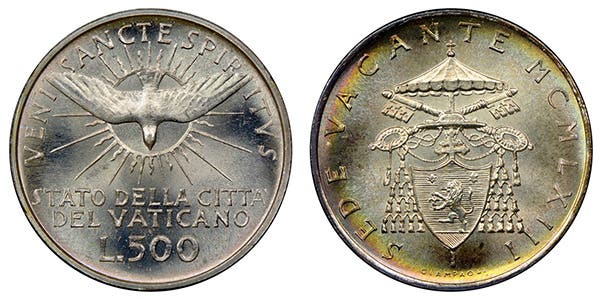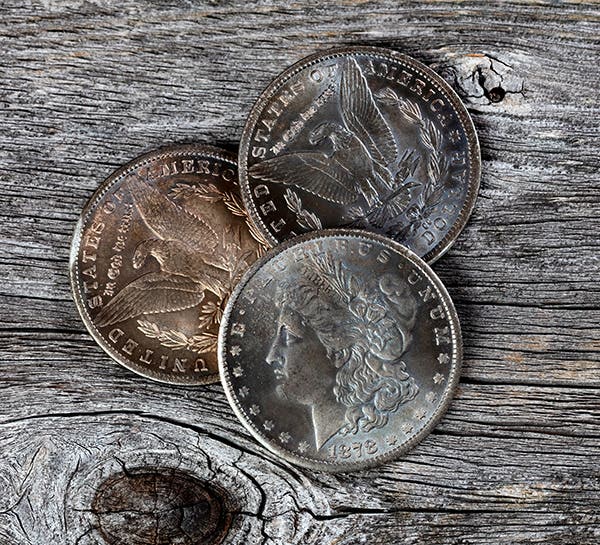How Do You Learn to Be a Coin Collector?
Questions and research! Keep reading and asking questions, and one day, you’ll become a true numismatist.
How do you learn all the ins and outs of being a coin collector? Perhaps you’ve assembled a collection of the State Quarter series, including the U.S. territories and the America the Beautiful issues. You’re now starting to accumulate the American Women quarters. You’re beginning to think of yourself as a coin collector, but you realize there are a nearly infinite number of things you don’t know about the hobby. Where and how will you get this information?
One way, of course, will be to continue and expand what you’re doing right now. That is, you’re reading an article in Numismatic News, a numismatic periodical. If you’re planning to be a collector, it may well be worthwhile to subscribe to this and to other regularly issued publications.
Another way to learn about coin collecting is to ask questions. Perhaps the answers to these questions will both educate you and further point you in the right direction to enhance your knowledge.
But what are the initial questions to ask in your pursuit of information? I found an interesting discussion on CoinTalk that enumerates some of the questions new collectors are likely to ask. The original poster (OP) began the thread with the following comment: “Please list what you think are the most common questions asked about coins (on the site).”
He then wrote that he would start the thread with two questions, but he actually listed two questions that are really the same question. (1) “What’s my coin worth?” and (2) “What’s the value of my coin?”
Of course, there are many possible answers to this, particularly if the question(s) are asked over the phone or online without photographs of the coin in question. Suppose a friend calls and tells you he was going through a drawer and found a 1921 silver dollar.
“What’s it worth,” he wants to know. To answer this question, you need several pieces of information. First, is it a Morgan dollar or a Peace dollar? The quickest way to answer this question is to ask about the eagle on the back of the coin. Is it standing on a mountaintop with its wings folded and looking to the right? If so, it’s a Peace dollar; if not, it’s a Morgan dollar.
If it’s a Peace dollar, you need to know the grade, so you say, “What’s the condition?” If the questioner is a novice, the answer is likely to be, “It’s really nice. You can read all the lettering.”
At this point, consulting a handy “Red Book,” you may say, “The value can be anywhere between a few hundred dollars up to $10,000, depending on the coin’s grade.” Or even more, if it’s a proof. But you don’t mention this possibility. Most people new to collecting will automatically assume their coin is at the top of the grading scale, whatever that is.
Another common question on CT is, “What kind of error is this?” This, of course, is followed by, “What’s it worth?”
The most common answer to this question is, “It’s not an error. It’s damaged and only worth face value.” Trust me, this answer is unlikely to be accepted.
The next question is likely to be, “Where can I sell it?” This may come after you’ve said it’s not worth anything other than face value.
Another question that often follows someone being told on CoinTalk that their coin isn’t worth anything is, “Should I send it to be graded?” Of course, what they’re really asking is if the coin should be sent to a certification service, where it can be identified as being worthless and graded at the same time.
At this point, someone on CoinTalk will point out the certification fees plus the cost of postage to and from the certification service. The costs dictate that a coin must have a fairly substantial value before being sent to one of the services.
The owner of this “fabulous” coin may become angry at the CoinTalk person, saying that the coin is more or less worthless. “What makes you an expert? I’ve had hundreds of people tell me it’s worth a fortune!”
Another question often asked by novice collectors is, “How do I clean my coins?” The standard response to this is, “Don’t clean them.”
Alternatively, it might be, “Take it to a coin dealer who’s really an expert and who could tell you whether or not the coin should be cleaned. If it should be, send it to a certification service that, for a fee, will conserve the coin and improve its appearance.”
“Is this a double die?” Note that this question uses the wrong term to refer to a coin with a doubled die. The questioner is hoping that the coin is a doubled die like the 1955 doubled-die obverse Lincoln cent.
It is much more likely that the person has a so-called “Poor Man’s Doubled Die” cent, created by die deterioration doubling. It is caused when the design on a worn die becomes eroded and distorted, causing part of the design (such as the final digit of the date) to appear doubled, according to Wikipedia. This is not caused by the “problem” that resulted in the 1955 DDO cent.
According to one poster, “For a while on CT, the leading question was, ‘Is this a 1969-S DDO cent?’” So common was the question that Volume 1 of the 6th edition of Cherrypickers’ Guide has pictures of a 1969-S with strike doubling to compare with pictures of the real thing.
Paper money collectors also ask common questions on CT. For example, “Is my star note rare and valuable? I saw on YouTube that they could go for $100,000.”
“Star notes are used by the BEP (Bureau of Engraving and Printing) to replace misprinted/damaged currency before it goes into circulation. These replacement notes are printed just like normal notes, except there is a star printed in the serial number.” They’re not rare, according to what I read online, and are unlikely to be worth more than the face value of the bill.
If you’ve asked any of these questions and have received an answer you didn’t like, don’t beat yourself up about it. Chances are you’re in good company.
Keep reading and keep asking questions, and one of these days, you’ll become a true numismatist.
You may also like:








